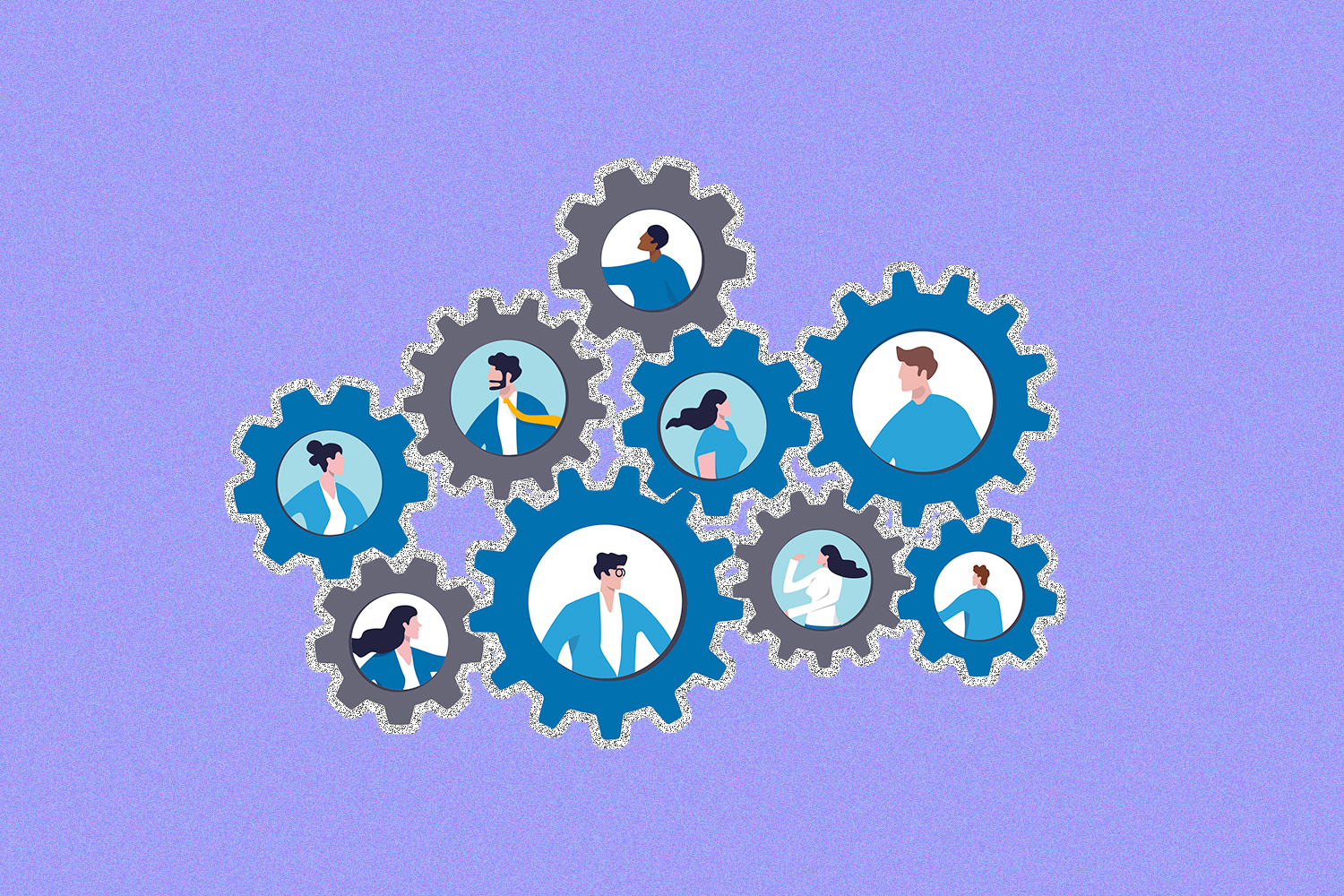From health to home to work, the COVID-19 pandemic continues to highlight the precariousness of these different aspects of our lives are and how stability in all three is intrinsic to being a better person, a better parent, and a better employee. It’s essential that you as an executive leader recognize and accommodate the needs of the growing population of caregiver employees who are balancing their careers and families.
For perspective, 62% of caregivers were employed while caring for someone over 50 in 2020, according to an AARP report. Furthermore, a Pew Research Center survey in October 2021 found that more than half of U.S. adults in their 40s support both a child and a parent 65 or older, a group commonly referred to as the sandwich generation.
Although parents and other caregivers have different experiences, the support they need from companies looks similar. Here are several recommendations from chief diversity officers and executive leaders on how to best support caregiver employees within your organization.
1. Create an employee resource group dedicated to parents, caregivers, and allies within your organization
A simple way to uplift your employees who are parents and caregivers is by creating a community within your organization. You can do that by creating a Slack channel. Take it a step further by starting an employee resource group (ERG).
Parents and Caregivers at Unispace was the second ERG launched at the global workplace strategy, design, and construction firm to encourage belonging in the male-dominated industry. Chely Wright, the chief diversity officer at Unispace, reiterates how quickly anyone can become a caregiver.
“We’ve all become caregivers at the drop of a hat — all it takes is one COVID test pinging positive in your household and all of a sudden you’re a caregiver,” Wright says. “We thought it was a really important moment to launch the conversation around parents and caregiving.”
Madhavi Bhasin — the vice president of diversity, inclusion, and belonging at Okta, Inc., a cloud-based identity management system — says Caregivers@Okta is one of the company’s newest ERGs, born out of the “Parents at Okta” Slack channel, which has approximately 400 members. While the channel was initially only for parents, Okta opened up the ERG to include caregivers for aging parents. “It was important for us that when we created [the ERG], we created it as a holistic group — you can be a caregiver for either a young one or for aging parents,” Bhasin says.
Aubrey Blanche, the senior director of people operations and strategic programs at employee experience Software as a Service (SaaS) company Culture Amp and a Senior Executive DEI Think Tank member, shares that their Camp Carebears ERG for caregivers opened its community to the entire company by creating two Slack channels: one for ERG members and one for allies.
“Caregivers are in the closed channel and then maybe you’re not a caregiver, but you care about them and their issues, so you would participate in the allies channel, and that’s true for all of our ERGs. We have a safe space, and then we have a way for the whole company to participate in the program,” Blanche says.
2. Offer schedule flexibility
Across the board, DEI leaders agree that work flexibility is a top requirement for wholly supporting parents and caregivers. At Culture Amp, Blanche says they’re an “impact-focused business,” meaning as long as employees complete their work, the hours they put in shouldn’t matter. Employees are encouraged to block off their calendars for activities like school pick-up.
“Data we’ve collected from caregivers shows they really appreciate that we recognize that you are a person and your real life is more important than your work life, so work will fit around what you need to do at home,” says Blanche.
Bhasin echoes Blanche’s remarks. She adds that, as a mother to an 8-year-old child, she realizes picking up and dropping off her son is a privilege many employees don’t have. “I would say a big step [employers] can take towards showing that you care is through flexibility because you can’t plan your calendar [ahead] as a caregiver.”
3. Delegate work to the team when caregivers and parents take time off
If you’re allowing employees to take time off to care for their children or family members, further support them by taking work off their plates, too. A report by the American Psychological Association revealed 42% of employees who take time off dread returning to work, and 49% say they return to a heavier workload because tasks piled up during their leave, deterring many from taking time off. Unfortunately, many caregivers and parents don’t have a choice when it comes to taking time off.
Carin Taylor, the chief diversity officer (CDO) at Workday, understands firsthand the importance of having time off allocated for caregiving. When Taylor became a caregiver for her mother, helping her through dementia and the end of her life, it was also one of the most demanding points of her career. Eventually, the day came when she had to take extended time off to plan her mother’s funeral. She says there were no questions asked by Workday’s C-suite or her team, and they fully supported her taking off as much time as she needed. She also didn’t have to play catch-up upon returning.
“When I came back to work, everything had moved on. I didn’t have to come back in and do four weeks of work. I didn’t have to think about any of that. That in and of itself was probably a godsend that I didn’t recognize was there to not have that additional stress in my life,” Taylor says.
4. Model support from the top-down
Regardless of how wonderful your benefits may be, they don’t matter if employees don’t feel comfortable using them. If you and other leaders aren’t utilizing benefits, taking time off, and setting boundaries, the rest of your organization won’t either.
“Culture is often set top-down. Senior leadership needs to be vocal about supporting employees, and if they have a family expansion event, they should also take their full leave,” says Michelle Yu, CEO and co-founder of Josie, a program that helps parents transition back into work.
Blanche shares that when a C-suite executive at Culture Amp took a month off to care for her seriously ill parents, other executives were transparent with her team about what was happening and how to move forward. They delegated her tasks while giving her the opportunity to prioritize her personal life. “If you’re a line manager, and you see that the CFO gets to prioritize their life, it creates space and permission for other people to do that as well,” Blanche says.
To encourage openness from the beginning, Blanche encourages “any leader, from the C-suite to a frontline manager” to start conversations with your employees. “As a manager, I do this with everybody,” she says. “When they onboard with me, I say, ‘hey, it matters to me that I create an experience that works for you. I want to get the work done, but we need to do it in a way that’s sustainable for you. Do you have priorities outside of work or specific needs that I need to keep in mind as we build our relationship?’ Open the door to letting people share and don’t make assumptions.”
When an employee told Blanche she had a child with a disability who had a weekly appointment, Blanche told her to book it on her calendar and make sure no one scheduled over it. If they did, Blanche says she suggested the employee escalate it to her so she could help work it out. “It’s not a fancy program. It’s just being open to being supportive and being very forthright that you want to show up that way,” Blanche says.
5. Survey employees to determine what kind of support they need
If you’re not sure what your employees want or need, ask them. At Culture Amp, its HR system includes a question prompt, asking employees if they are a caregiver of children, a caregiver of adults, a caregiver of both children and adults, or not a caregiver. “We find that, especially for caregivers of adults, who are often frankly forgotten in the conversation about caregiving, simply having the option to elect [caregiver] feels really important. They feel seen and like their experiences are considered and valued,” Blanche says.
“We need to ensure that we are listening and giving a voice to our employees in every way that we possibly can … They can help to educate us on how we can support them better,” Taylor adds. “If nothing else, I would say an inlet and a voice for employees to share what their needs are is probably the best thing companies can do right now.”
You can also use these surveys to refine your benefits. Since the needs of caregivers and parents are always changing, your organization’s offerings need to evolve as well. Okta sends employee engagement surveys, which include breakout sections for caregivers, around May and June to make changes to their open enrollment offerings in November.
Meanwhile, Culture Amp audits its core programs, including caregivers’ benefits, biannually. Each quarter, the SaaS company also collects employee surveys, which include prompts like, “People from all backgrounds have equal opportunities to succeed,” and “I belong at Culture Amp.” These surveys are then parsed by seven demographics: gender, race, ethnicity, disability, LGBTQ status, caregiver state, and native English speaker status.
“For every department or practice, we’re looking at the differences in experience between caregivers and non-caregivers, and we’re flagging them to our business partners,” Blanche says. “It’s a continuous refinement of our culture process.”
Yu says Josie’s three-pronged approach to providing holistic care for clients was based on interviews with dozens of parents about the support they need from employers. She and her co-founder, Zach Hafner, developed a team-based approach to helping employees transition from parenthood back to work, which is outlined below under the benefits section.
6. Create touchpoints to remind employees about the resources available to them
Human resources will probably tell your employees about their benefits during onboarding, then offer a refresh around open enrollment. But you can take your support a step further by creating touchpoints that offer a clearer look at employee benefits throughout the year to remind them what’s available.
Each week, Culture Amp’s newsletter highlights a benefit, giving employees a thorough overview of their benefits throughout the year. The organization also partners with ERGs to host benefits overview events. Camp Carebears gives an overview of services and benefits and also covers topics like how to talk to your manager about needing a flexible schedule.
7. Show you care: provide benefits that meet your employees’ needs
Taylor shares the best thing you can do as a diversity leader who’s working toward a more diverse and inclusive culture is to meet people where they are and show them they will be accepted and supported for who they are.
“It’s important to understand that every caregiver’s needs will be different. As a company, you might feel like you can’t address it all, but you can be creative in meeting [employees] more than halfway,” Bhasin adds. “When you’re designing your caregiver programs, look at it from the lens of the diversity of caregivers that you have and try and bring in something that helps share the load for the majority of the population.”
Here are four examples of resources you can provide:
- Mental and physical health care
Providing health insurance for parents and caregivers is critical. The more your company can afford to do, the better-supported employees will feel. Culture Amp provides a series of health insurance options, including partial coverage for dependent healthcare premiums.
Josie’s program gives parents access to three coaches: an executive coach, who answers career-related questions like what to do when you’re pregnant and up for a promotion; a transition coach, who covers transitional needs, including how to discuss shared responsibilities with your partner and how to pump at work; and a mental health coach, who may be a therapist well-versed in working with parents returning to work.
Yu adds there’s still a stigma around talking about baby blues, postpartum anxiety, and depression, so it’s important to encourage leadership and management to open the dialogue about mental support for employees. “Proactively saying, ‘we have support specifically for someone like you who’s going through this transition; it’s available if you need it’ is a lot better than saying, ‘here’s a program you can find on our website. It’s self-service; figure it out on your own.’ Time is not always something people have when they’re in the throes of a new baby and returning to work, so it’s important for employers, to the extent that they can, be more proactive and show that support. It can go a long way in the relationships you have with your employees,” says Yu.
Similarly, Culture Amp provides coaching and therapy for employees and their dependents, while Okta gives up to eight one-on-one coaching or therapy sessions through their partnerships. Both organizations use the mental health platform Modern Health, which is a fully integrated mental health and wellness platform offering therapy, coaching, and self-guided courses.
Workday’s chief diversity officer Taylor says their partnership with Care.com also allows them to provide additional services for caregivers within the organization. The online marketplace connects employees with tutors and housekeepers and helps them find care for children, seniors, family members with special needs, and pets. - Estate and financial planning
According to Caring.com’s 2023 Wills and Estate Planning Study, just one in three Americans has an estate plan, leaving a majority of U.S. families to handle the financial burden.
The New England Center for Children, which provides comprehensive services for children with autism, partners with CompEAP to provide estate and financial planning resources to employees. The center’s director of diversity, equity, and inclusion, Fatou Njie-Jallow, and executive director, Jessica Sassi, share that CompEAP provides a series of self-help modules and a network of lawyers and financial advisors who can guide employees through major life changes such as a death in their family, marriage, or divorce. - Crisis assistance
In times of crisis, Culture Amp has an Emergency Support Policy, which offers three benefits: up to three weeks of paid leave, financial assistance, and emergency relocation support.
Paid leave is available for employees caring for an ailing family member, recovering from climate-driven property damage, or disputing child custody. Financial assistance is offered when time off isn’t the solution. Emergency relocation support is used when employees need to move if, for example, they are a caregiver to a transgender child and live in a location that is legislatively hostile or doesn’t allow their child to receive necessary healthcare. If an employee relocates to a safer location where Culture Amp operates, the company partially subsidizes the move. - Childcare and educational support
Finding safe, affordable childcare is a growing concern for parents. According to a 2022 survey from the First Five Years Fund, one out of every five parents reported they cut back on work hours, turned down a job opportunity, or left the workforce entirely because of childcare issues.
As a solution, Okta provides parents with options for childcare and tutoring services through Bright Horizons, and it covers registration fees or offers early enrollment for employees’ children. Moreover, Okta offers partially or fully discounted programs to caregivers whose children are immunocompromised or have long COVID and must learn from home.
In addition to on-site daycare and preschool offered at a reduced price for employees, NECC also provides a $5,000 stipend for staff and consultants who don’t work from the nonprofit, special education school’s headquarters. Sassis shares that daycare was a precious resource when she became a new parent.
“To be able to return to work and then have your child physically present near you made all the difference in the world … especially if you’re like me and live across the country from your family,” Sassi says. “To have another built-in community to support and provide guidance and help with the transition was incredibly valuable.”






